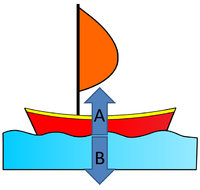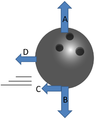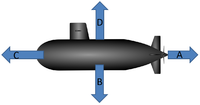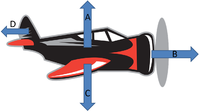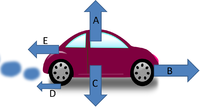Difference between revisions of "Force"
(→Representing Forces) |
(→Representing Forces) |
||
| Line 65: | Line 65: | ||
: C = [[Thrust]] | : C = [[Thrust]] | ||
: D = [[Upthrust]] | : D = [[Upthrust]] | ||
| + | | style="height:20px; width:200px; text-align:left;" | | ||
| + | : A = [[Lift]] | ||
| + | : B = [[Thrust]] | ||
| + | : C = [[Weight]] | ||
| + | : D = [[Air Resistance]] | ||
| style="height:20px; width:200px; text-align:left;" | | | style="height:20px; width:200px; text-align:left;" | | ||
: A = [[Normal Contact Force]] | : A = [[Normal Contact Force]] | ||
| Line 71: | Line 76: | ||
: D = [[Friction]] | : D = [[Friction]] | ||
: E = [[Air Resistance]] | : E = [[Air Resistance]] | ||
| − | |||
|} | |} | ||
Revision as of 11:36, 13 October 2018
Contents
Key Stage 2
Meaning
A force is something which can make an object; speed up, slow down or change shape.
- Noun: Force
About Forces
- A force can make an object speed up. When you let go of a pencil it will fall because a force called weight is making it speed up.
- A force can make an object slow down. When you roll a ball on the carpet it will slow down and stop because a force called friction has slowed it down.
- A force can change the shape of an object. When you tip a spoon of honey the honey will change shape and stretch because a force called weight pulls it into a long shape before dripping.
Key Stage 3
Meaning
A force is an influence that can change the speed, direction or shape of an object.
About Forces
- Forces can be split into two groups, Contact Forces and Non-contact Forces.
| Contact Forces | Non-contact Forces |
- Forces can cause an object to accelerate.
- A pair of opposing forces can twist, stretch or squash an object. This is known as deformation.
Representing Forces
- Forces can be represented in a diagram with arrows that show the magnitude and direction of the force. A bigger arrow means a bigger force.
|
| |
|
|
|
